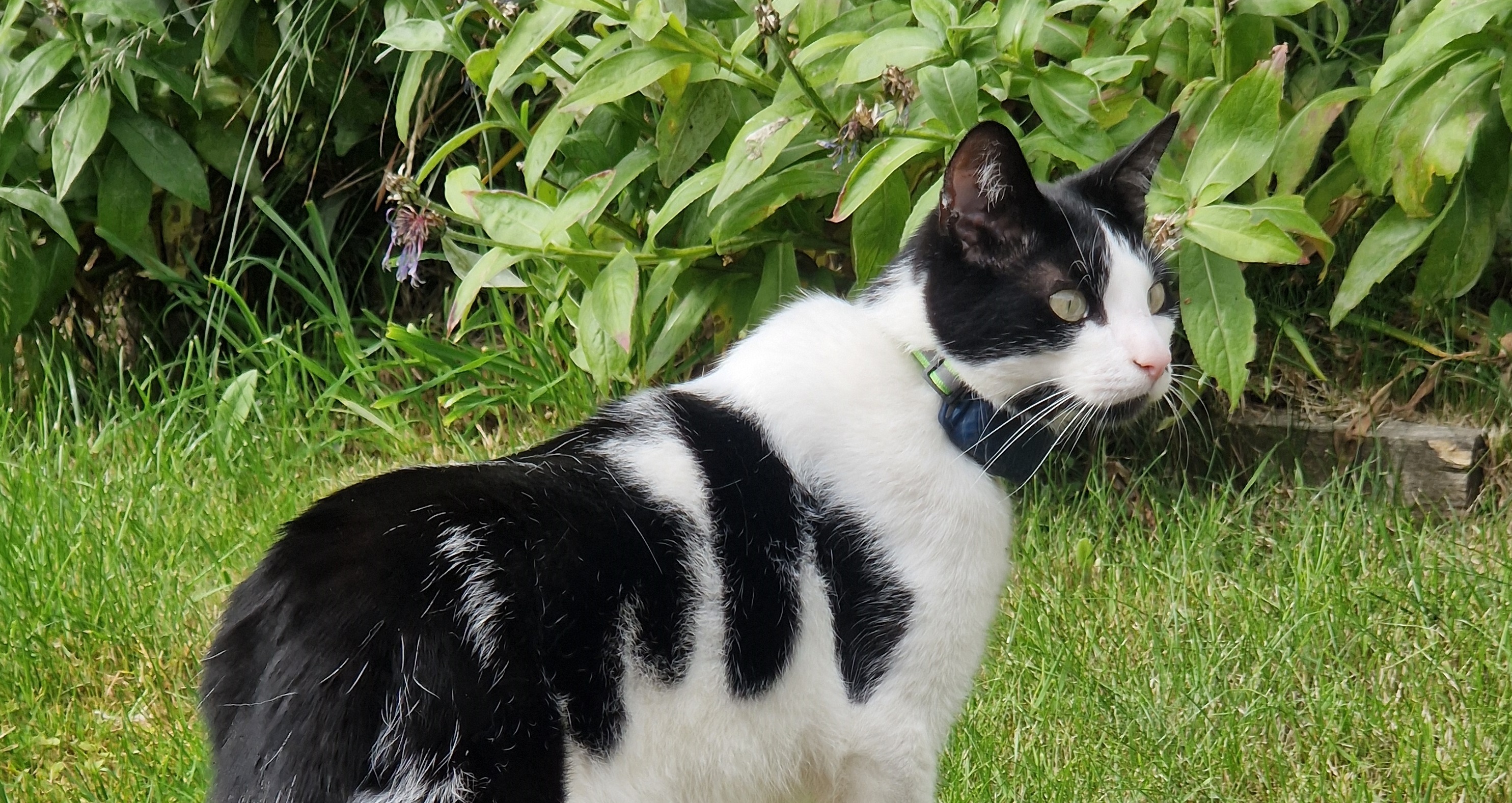Follow that cat!
Saving Wildcats is attempting to restore the wildcat population in an area of the Cairngorms National Park by breeding them and releasing them into the wild, with the first set of wildcat releases occurring in Summer 2023. Although there have been notable successes, such as the recent births of wildcat kittens in the wild, there are still many challenges ahead for the expanding wildcat population. One of the key threats is hybridisation (or interbreeding) with domestic cats.
Although wildcats (Felis silvestris) and domestic cats (Felis catus) are two different species, they can interbreed and produce viable and fertile offspring known as hybrids. This process of hybridisation dilutes the wildcat gene pool, pushing the wildcat towards genetic extinction. Domestic cats may also transmit diseases to wildcats, putting them at additional risk. One way that Saving Wildcats addresses this problem is to carry out a Trap-Neuter-Vaccinate-Return programme of feral domestic cats across the project area, and to encourage responsible domestic cat ownership, with the support of our local branch of Cats Protection and veterinary practices.
However, we still need to know more about the process of hybridisation, for example, it is important to understand how cats move through the landscape, and how and where domestic cats and wildcats are most likely to come into contact with each other. We already have this information for our released wildcats, who were all fitted with radio-GPS collars just prior to their release. Unfortunately we are unable to put tracking devices on wild-living domestic cats (feral cats), but we can still gain valuable information from tracking domestic pet cats instead.
Project officer Lara has been working with members of the local community to provide them with tracking devices to fit on their pet cats in the project area. Each tracking device was generously part-donated to the project by Tractive. These trackers have a built-in SIM that uses mobile networks to collect location information, but unfortunately, we can’t use these collars to monitor released wildcats, as they need to be recharged every four to five days. This is also a fantastic opportunity for us to get to know pet cats living within the wildcat release area and their doting owners.
With the permission of their owners, Lara has fitted Tractive collars to six pet cats so far for two to four weeks at a time (all the feline participants in the study are neutered and vaccinated, so they pose no threat to wildcats). It has been very interesting to see where they explore, with some cats moving up to three and a half miles a day! Lara hopes to overlay movement information of these domestic cats with the data obtained from the GPS-radio collars that released wildcats have been fitted with, to see if there is any evidence of interaction.
If you live in Strathspey or Badenoch and are interested in contributing to wildcat conservation, we are looking for members of our local community who want to find out more about where their pet cat goes! We are looking for domestic pet cats who are neutered, fully vaccinated within the last three years and in general good health. All cats need to be comfortable with wearing a standard feline collar. Cat owners will be able to see where their cat roams, and log in to an online platform that will allow them to see these movements in real time!
Please email us at wildcats@rzss.org.uk if you'd like to be involved.

